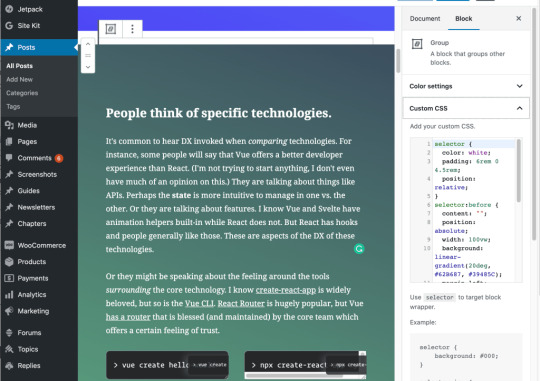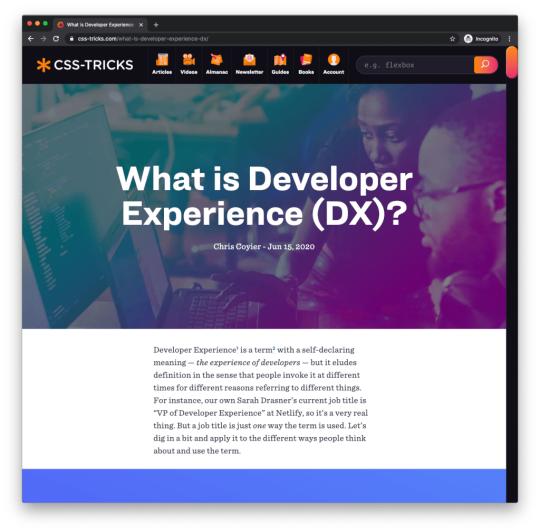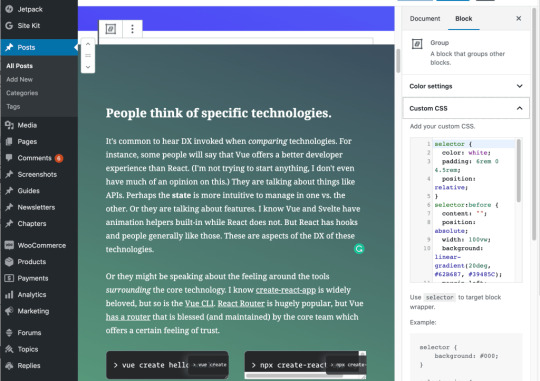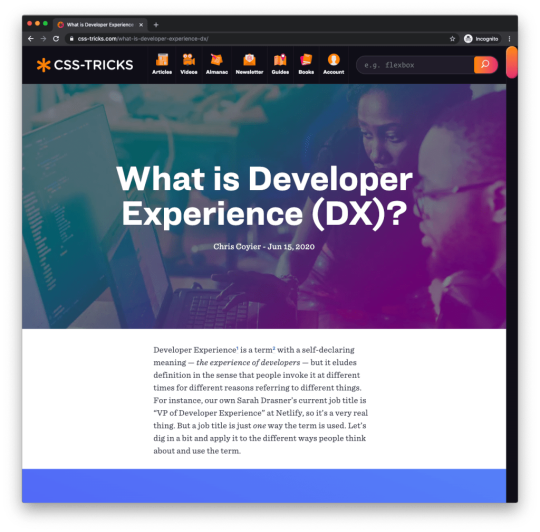#i think google would clearly want people to support their file format otherwise what was it for
Explore tagged Tumblr posts
Text
Ok this post was delayed because i was sitting next to my cat because she was lonely and then i fell asleep (peaceful world) but the thing about WebP. WebP is a COMPLETELY FINE FILE FORMAT, in fact, its compression leads to much smaller file sizes than PNGs, which means that pages using WebP images load MUCH faster on bad connections than they would if they used PNG files! This is a good thing! Objective good! (they are called "Web"ps because they are for the web!)
The issue with it is that somehow their adoption is extremely lopsided, so they're EVERYWHERE online, but it's disproportionately inaccessible to create or edit one without having to go through a bunch of file converters that will probably lead to data degradation if you have to keep going through them. So the real question is "Why is almost every program apparently so opposed to adding support/export options for a now extremely widespread image format that's existed since 2010????" Like you have had time? Why does trying to open a webp on my computer open Microsoft Edge instead of the photo viewer. What excuse could there possibly be for this.
#i don't think it being a google invention is even an obstacle. Open source game engine godot has webp support.#and there was that paint.net plugin that existed since 2011.#i think google would clearly want people to support their file format otherwise what was it for#but the only art program i know that apparently has webp support by default is photoshop#and i had to look up that it had that. nobody mentions it#mypost#also yes webps are a bit lossy but that's the point.#not every webpage needs Extreme Full Quality Nothing Lost PNGs#in fact i'd argue that most don't need them.#think of webps as like the middle point between jpgs and pngs#except leaning more to the png side and also they can be animated like gifs#theyre like a frankenstein...
12 notes
·
View notes
Text
The Thirteenth Fourth
Well boy howdy. The 13th birthday of CSS-Tricks has rolled around. A proper teenager now, howabouthat? I always take the opportunity to do a bit of a state of the union address at this time, so let’s get to it!

Design
Technically, we’re still on v17 of the site design. This was the first design that I hired first-class help to do, and I’m still loving it, so I haven’t had much of an itch to do massive changes to it. Although it is quite different¹ today than it was on launch day.
For example…
The search experience is totally different, as it is powered by Jetpack’s Instant Search now.
The Almanac pages (e.g. background-blend-mode) have an additional sidebar that helps you navigate between pages
I re-did the typography using Hoefler&Co. Sentinel and Ringside. The monospace font code snippets are in Operator Mono and the logo has long-been Gotham Rounded, so it feels like one big happy family of typefaces.
Maybe next year we’ll do something different again. My list is starting to grow for some behind-the-scenes tech stuff I wanna re-jigger, and sometimes that goes hand in hand with redesign work.
Closed Forums
The forums on this site have been a mental weight on me for literally years. Earlier this year I finally turned them off. They are still there, and probably always will be (so the URLs are maintained), but nobody can post new threads or replies.
It was a painful move. Even as I did it, there was still some regular daily activity there and I’m sure it didn’t feel good to those people to have a place they have invested time in shut down. Here’s why I did it:
Nobody here, including me, checked in on the forums with any regularity. Unmoderated public forums on the internet are not acceptable to me.
The spam volume was going up. There were periods where most posts, even after the automatic spam blocking I get from Akismet, where spam that required manual removal. Even if we had a dedicated forums employee, that’s no fun, and since we didn’t, it was just a random job for me and I don’t need a time sink like that.
The forums represent a certain level of technical debt. They need to be updated. Their design needs to be functional in the context of this site. At one point I ripped out all custom styles and left it be the default theme, which was a good step toward reducing technical debt, but in the end it wasn’t enough.
I can handle some work and some technical debt, of course. But when you combine those things with the fact that the forums don’t contribute much to what I consider to be the success of the site. They don’t exactly drive page views or advertising demand. There isn’t really money to hire help specifically for the forums. But that’s a small part of it. I want this site to help people. I think we can do that best if we focus on publishing with as little divided attention as possible. I think there are places on the internet that are better for forum-like discourse.
Now that they’ve been off a number of months, I can report that the lifting of the mental weight feels very good to me and there has been little if any major negatives.
Social
Here’s another mental weight I lifted: I stopped hand-managing the Twitter account (@css). I still think it’s good that we have a Twitter account (and that we have that cool handle), but I just don’t spend any time on it directly like I used to.
In the past, I’d queue up special articles with commentary and graphics and stuff and make sure the days were full with a spread of what I thought would be interesting tweets about web design and development. That’s fine and all, but it began to feel like a job without a paycheck.
We don’t get (or seem to drive) a lot of traffic from Twitter. Google Analytics shows social media accounts for less than 1% of our traffic. Investing time in “growing” Twitter just doesn’t have enough of an upside for me. Not to mention the obvious: Twitter can be terribly toxic and mentally draining.
So now, all our posts to Twitter are automated through the Jetpack social media connection (we really use Jetpack for tons of stuff). We hit publish on the site and the article is auto-tweeted. So if you use Twitter like an RSS feed of sorts (just show me the news!), you got it.
The result? Our follower count goes up at the same rate it always did. Engagement there is the same, or higher, than it ever was. What a relief. Do ten times less work for the same benefit.
When I have the urge to share a link with commentary I use the same system we’ve always had here: I write it up as a link blog post instead. Now we’re getting even more benefit: long-term content building, which is good for the thing that we actually have on our side: SEO.
Someday we could improve things by hand-writing the auto-tweet text with a bit more joie de vivre, crediting the author more clearly, and, #stretchgoal, a custom or fancy-generated social media graphic.
Opened Up Design Possibilities
One aspect of this site that I’ve been happy with is the opportunity to do custom design on content. Here are some examples of that infrastructure.
On any given blog post, we can pick a template. Some of those templates are very specific. For example, my essay The Great Divide is a template all to itself.
In the code base, I have a PHP template and a CSS file that are entirely dedicated to that post. I think that’s a fine way to handle a post you want to give extra attention to, although the existence of those two files is a bit of technical debt.
I learned something in the creation of that particular essay: what I really need to open up the art direction/design possibility on a post is a simple, stripped-down template to start from. So that’s what we call a “Fancy Post” now, another template choice for any particular post. Fancy Posts have a hero image and a centered column for the content of the post. From there, we can use custom CSS to style things right within WordPress itself.
For example, my recent post on DX is styled as a Fancy Post with Custom CSS applied right within the block editor.


The Block Editor itself is a huge deal for us. That was one of my goals for the year, and we’ve really exceeded how far we’d get with it. I think writing and editing posts in the block editor is a million miles ahead of the old editor.
The hardest challenge was (and still is really) getting the block transforms set up for legacy content. But once you have the power to build and customize blocks, that alone opens up a ton of design possibility within posts that is too big of a pain in the butt and too heavy on technical debt otherwise.
Another door we opened for design possibilities is a classic one: using categories. A sort of freebie you get in WordPress is the ability to create templates for all sorts of things that just sort of automatically work if they are named correctly. So for example I have a file called category-2019-end-of-year-thoughts.php and that fully gives me control over making landing pages for groups of posts, like our end-of-year thoughts homepage. Not to mention our “Guide Collection” pages which are another way to programmatically build collections of pages.
That’s a lot of tools to do custom work with, and I’m really happy with that. It feels like we’ve given ourselves lots of potential with these tools, and only started taking advantage of it.
Speaking of which, another aspect of custom design we have available is the new book format…
eCommerce
We’re using WooCommerce here on the site now again. I just got done singing the praises of the Block Editor and how useful that has been… WooCommerce is in the same boat. I feel like I’m getting all this powerful functionality with very little effort, at a low cost, and with little technical debt. It makes me very happy to have this site on WordPress and using so much of suite of functionality that offers.
So for one thing, I can sell products with it, and we have products now! Lynn Fisher designed a poster for our CSS Flexbox guide and designed a poster for our CSS Grid guide, which you can now buy and ship anywhere in the world for $25 each. Look, with the Block Editor I can put a block for a poster right here in this post:
CSS Flexbox Poster
Find yourself constantly looking up the properties and values for CSS flexbox? Why not pin this beautiful poster up to the wall of your office so you can just glance over at it?
$25.00
Shop now
Another thing we’re using WooCommerce for is to sell our new book, The Greatest CSS Tricks Vol. I. If we actually made it into a proper eBook format, WooCommerce could absolutely deliver those files digitally to you, but we haven’t done that yet. We’ve take another path, which is publishing the book as chapters here on the site behind a membership paywall we’re calling MVP supporters. The book is just one of the benefits of that.
WooCommerce helps:
Build a membership system and sell memberships. Membership can lock certain pages to members-only as has programmatic hooks I can use for things like removing ads.
Sell subscriptions to those memberships, with recurring billing.
Sell one-off products
And I’m just scratching the surface of course. WooCommerce can do anything eCommerce wise.
Analytics
They are fine. Ha! That’s how much I worry about our general site analytics. I like to check in on them from time to time to make sure we’re not tanking or anything scary, but we never are (knock on wood). We’re in the vicinity of 8m page views a month, and year-over-year traffic is a bit of a dance.

Sponsors
THANK YOU THANK YOU THANK YOU
That’s what I have to say to all our sponsors. We’re so damn lucky to work with a lineup of sponsors that I wholeheartedly endorse as well as literally use their products. We have different sponsors all the time, but these are the biggest and those who have been with us the longest.
Automattic: Thanks for building great software for the WordPress ecosystem. This site is made possible by a heaping helping of that software.
Netlify: Thanks for bringing the Jamstack world to life. I’m also a big fan of this way of building websites, and think that Jamstack should be the foundation for most websites. Beyond that, you’ve redefined modern developer experience.
Flywheel: Thank you for hosting this website, being a high-quality host I can trust and who has been helpful to me countless times. This is what high-quality WordPress hosting looks like.
Frontend Masters: Thank you for being an education partner that does things right and helps me have the best possible answer for people when they are searching a more structured formal education about doing web work: go try Frontend Masters.
If you’re trying to reach front-end developers with your products, that’s literally how I make a living and can help.
My Other Projects
CodePen is no spring chicken either, being over 8 years old itself. I repeat myself a lot with this particular aspect of talking about CodePen: we’ve got a ton of ideas, a ton of work to do, and we can’t wait to show you the CodePen of tomorrow. 2020 for CodePen has been a lot different than the last 2-3 years of CodePen. Some technical choices we’ve made have been starting to pay off. The team is vibing very well and absolutely tearing through work faster than I would have thought possible a few years ago, and we haven’t even unlocked some of the biggest doors yet. I know that’s vague, but we talk in more detail about stuff on CodePen Radio.
ShopTalk, as ever, is going strong. That’s 420 episodes this week, friends. Dave has me convinced that our format as it is, is good. We aren’t an instruction manual. You don’t listen to any particular episode because we’re going to teach you some specific subject that we’ve explicitly listed out. It’s more like water cooler talk between real world developers who develop totally different things in totally different situations, but agree on more than we disagree. We might evolve what ShopTalk show is over time, but this format will live on because there is value in discussion in this format.
Life
My wife Miranda and I are still in Bend, Oregon and our Daughter Ruby is two and a half. She’s taking a nap and I’m looking at the monitor as I type.
We have the virus here like everywhere else. It’s sad to think that we’re this far into it and our local hospital is pleading with people to be careful this holiday weekend because they are very near capacity and can’t take much more. Here’s hoping we can get past this painful period. Stay safe and stay cool, friends, thanks for reading.
I always feel bad when I make design changes away from an actual professional designer’s work. Is the site design better today than Kylie‘s original? Uhm probably not (sorry for wrecking it Kylie!), but sometimes I just have an itch to fiddle with things and give things a fresh look. But the biggest driver of change is the evolving needs of the site and my desire to manage things with as little technical debt as possible, and sometimes simplifying design things helps me get there.
The post The Thirteenth Fourth appeared first on CSS-Tricks.
The Thirteenth Fourth published first on https://deskbysnafu.tumblr.com/
0 notes
Text
The Thirteenth Fourth
Well boy howdy. The 13th birthday of CSS-Tricks has rolled around. A proper teenager now, howabouthat? I always take the opportunity to do a bit of a state of the union address at this time, so let’s get to it!

Design
Technically, we’re still on v17 of the site design. This was the first design that I hired first-class help to do, and I’m still loving it, so I haven’t had much of an itch to do massive changes to it. Although it is quite different¹ today than it was on launch day.
For example…
The search experience is totally different, as it is powered by Jetpack’s Instant Search now.
The Almanac pages (e.g. background-blend-mode) have an additional sidebar that helps you navigate between pages
I re-did the typography using Hoefler&Co. Sentinel and Ringside. The monospace font code snippets are in Operator Mono and the logo has long-been Gotham Rounded, so it feels like one big happy family of typefaces.
Maybe next year we’ll do something different again. My list is starting to grow for some behind-the-scenes tech stuff I wanna re-jigger, and sometimes that goes hand in hand with redesign work.
Closed Forums
The forums on this site have been a mental weight on me for literally years. Earlier this year I finally turned them off. They are still there, and probably always will be (so the URLs are maintained), but nobody can post new threads or replies.
It was a painful move. Even as I did it, there was still some regular daily activity there and I’m sure it didn’t feel good to those people to have a place they have invested time in shut down. Here’s why I did it:
Nobody here, including me, checked in on the forums with any regularity. Unmoderated public forums on the internet are not acceptable to me.
The spam volume was going up. There were periods where most posts, even after the automatic spam blocking I get from Akismet, where spam that required manual removal. Even if we had a dedicated forums employee, that’s no fun, and since we didn’t, it was just a random job for me and I don’t need a time sink like that.
The forums represent a certain level of technical debt. They need to be updated. Their design needs to be functional in the context of this site. At one point I ripped out all custom styles and left it be the default theme, which was a good step toward reducing technical debt, but in the end it wasn’t enough.
I can handle some work and some technical debt, of course. But when you combine those things with the fact that the forums don’t contribute much to what I consider to be the success of the site. They don’t exactly drive page views or advertising demand. There isn’t really money to hire help specifically for the forums. But that’s a small part of it. I want this site to help people. I think we can do that best if we focus on publishing with as little divided attention as possible. I think there are places on the internet that are better for forum-like discourse.
Now that they’ve been off a number of months, I can report that the lifting of the mental weight feels very good to me and there is been little if any major negatives.
Social
Here’s another mental weight I lifted: I stopped hand-managing the Twitter account (@css). I still think it’s good that we have a Twitter account (and that we have that cool handle), but I just don’t spend any time on it directly like I used to.
In the past, I’d queue up special articles with commentary and graphics and stuff and make sure the days were full with a spread of what I thought would be interesting tweets about web design and development. That’s fine and all, but it began to feel like a job without a paycheck.
We don’t get (or seem to drive) a lot of traffic from Twitter. Google Analytics shows social media accounts for less than 1% of our traffic. Investing time in “growing” Twitter just doesn’t have enough of an upside for me. Not to mention the obvious: Twitter can be terribly toxic and mentally draining.
So now, all our posts to Twitter are automated through the Jetpack social media connection (we really use Jetpack for tons of stuff). We hit publish on the site and the article is auto-tweeted. So if you use Twitter like an RSS feed of sorts (just show me the news!), you got it.
The result? Our follower count goes up at the same rate it always did. Engagement there is the same, or higher, than it ever was. What a relief. Do ten times less work for the same benefit.
When I have the urge to share a link with commentary I use the same system we’ve always had here: I write it up as a link blog post instead. Now we’re getting even more benefit: long-term content building, which is good for the thing that we actually have on our side: SEO.
Someday we could improve things by hand-writing the auto-tweet text with a bit more joie de vivre, crediting the author more clearly, and, #stretchgoal, a custom or fancy-generated social media graphic.
Opened Up Design Possibilities
One aspect of this site that I’ve been happy with is the opportunity to do custom design on content. Here are some examples of that infrastructure.
On any given blog post, we can pick a template. Some of those templates are very specific. For example, my essay The Great Divide is a template all to itself.
In the code base, I have a PHP template and a CSS file that are entirely dedicated to that post. I think that’s a fine way to handle a post you want to give extra attention to, although the existence of those two files is a bit of technical debt.
I learned something in the creation of that particular essay: what I really need to open up the art direction/design possibility on a post is a simple, stripped-down template to start from. So that’s what we call a “Fancy Post” now, another template choice for any particular post. Fancy Posts have a hero image and a centered column for the content of the post. From there, we can use custom CSS to style things right within WordPress itself.
For example, my recent post on DX is styled as a Fancy Post with Custom CSS applied right within the block editor.


The Block Editor itself is a huge deal for us. That was one of my goals for the year, and we’ve really exceeded how far we’d get with it. I think writing and editing posts in the block editor is a million miles ahead of the old editor.
The hardest challenge was (and still is really) getting the block transforms set up for legacy content. But once you have the power to build and customize blocks, that alone opens up a ton of design possibility within posts that is too big of a pain in the butt and too heavy on technical debt otherwise.
Another door we opened for design possibilities is a classic one: using categories. A sort of freebie you get in WordPress is the ability to create templates for all sorts of things that just sort of automatically work if they are named correctly. So for example I have a filed called category-2019-end-of-year-thoughts.php and that fully gives me control over making landing pages for groups of posts, like our end-of-year thoughts homepage. Not to mention our “Guide Collection” pages which are another way to programmatically build collections of pages.
That’s a lot of tools to do custom work with, and I’m really happy with that. It feels like we’ve given ourselves lots of potential with these tools, and only started taking advantage of it.
Speaking of which, another aspect of custom design we have available is the new book format…
eCommerce
We’re using WooCommerce here on the site now again. I just got done singing the praises of the Block Editor and how useful that is been… WooCommerce is in the same boat. I feel like I’m getting all this powerful functionality with very little effort, at a low cost, and with little technical debt. It makes me very happy to have this site on WordPress and using so much of suite of functionality that offers.
So for one thing, I can sell products with it, and we have products now! Lynn Fisher designed a poster for our CSS Flexbox guide and designed a poster for our CSS Grid guide, which you can now buy and ship anywhere in the world for $25 each. Look, with the Block Editor I can put a block for a poster right here in this post:
CSS Flexbox Poster
Find yourself constantly looking up the properties and values for CSS flexbox? Why not pin this beautiful poster up to the wall of your office so you can just glance over at it?
$25.00
Shop now
Another thing we’re using WooCommerce for is to sell our new book, The Greatest CSS Tricks Vol. I. If we actually made it into a proper eBook format, WooCommerce could absolutely deliver those files digitally to you, but we haven’t done that yet. We’ve take another path, which is publishing the book as chapters here on the site behind a membership paywall we’re calling MVP supporters. The book is just one of the benefits of that.
WooCommerce helps:
Build a membership system and sell memberships. Membership can lock certain pages to members-only as has programmatic hooks I can use for things like removing ads.
Sell subscriptions to those memberships, with recurring billing.
Sell one-off products
And I’m just scratching the surface of course. WooCommerce can do anything eCommerce wise.
Analytics
They are fine. Ha! That’s how much I worry about our general site analytics. I like to check in on them from time to time to make sure we’re not tanking or anything scary, but we never are (knock on wood). We’re in the vicinity of 8m page views a month, and year-over-year traffic is a bit of a dance.

Sponsors
THANK YOU THANK YOU THANK YOU
That’s what I have to say to all our sponsors. We’re so damn lucky to work with a lineup of sponsors that I wholeheartedly endorse as well as literally use their products. We have different sponsors all the time, but these are the biggest and those who have been with us the longest.
Automattic: Thanks for building great software for the WordPress ecosystem. This site is made possible by a heaping helping of that software.
Netlify: Thanks for bringing the Jamstack world to life. I’m also a big fan of this way of building websites, and think that Jamstack should be the foundation for most websites. Beyond that, you’ve redefined modern developer experience.
Flywheel: Thank you for hosting this website, being a high-quality host I can trust and who has been helpful to me countless times. This is what high-quality WordPress hosting looks like.
Frontend Masters: Thank you for being an education partner that does things right and helps me have the best possible answer for people when they are searching a more structured formal education about doing web work: go try Frontend Masters.
If you’re trying to reach front-end developers with your products, that’s literally how I make a living and can help.
My Other Projects
CodePen is no spring chicken either, being over 8 years old itself. I repeat myself a lot with this particular aspect of talking about CodePen: we’ve got a ton of ideas, a ton of work to do, and we can’t wait to show you the CodePen of tomorrow. 2020 for CodePen has been a lot different than the last 2-3 years of CodePen. Some technical choices we’ve made have been starting to pay off. The team is vibing very well and absolutely tearing through work faster than I would have thought possible a few years ago, and we haven’t even unlocked some of the biggest doors yet. I know that’s vague, but we talk in more detail about stuff on CodePen Radio.
ShopTalk, as ever, is going strong. That’s 420 episodes this week, friends. Dave has me convinced that our format as it is, is good. We aren’t an instruction manual. You don’t listen to any particular episode because we’re going to teach you some specific subject that we’ve explicitly listed out. It’s more like water cooler talk between real world developers who develop totally different things in totally different situations, but agree on more than we disagree. We might evolve what ShopTalk show is over time, but this format will live on because there is value in discussion in this format.
Life
My wife Miranda and I are still in Bend, Oregon and our Daughter Ruby is two and a half. She’s taking a nap and I’m looking at the monitor as I type.
We have the virus here like everywhere else. It’s sad to think that we’re this far into it and our local hospital is pleading with people to be careful this holiday weekend because they are very near capacity and can’t take much more. Here’s hoping we can get past this painful period. Stay safe and stay cool, friends, thanks for reading.
I always feel bad when I make design changes away from an actual professional designer’s work. Is the site design better today than Kylie’s original? Uhm probably not (sorry for wrecking it Kylie!), but sometimes I just have an itch to fiddle with things and give things a fresh look. But the biggest driver of change is the evolving needs of the site and my desire to manage things with as little technical debt as possible, and sometimes simplifying design things helps me get there.
The post The Thirteenth Fourth appeared first on CSS-Tricks.
The Thirteenth Fourth published first on https://deskbysnafu.tumblr.com/
0 notes